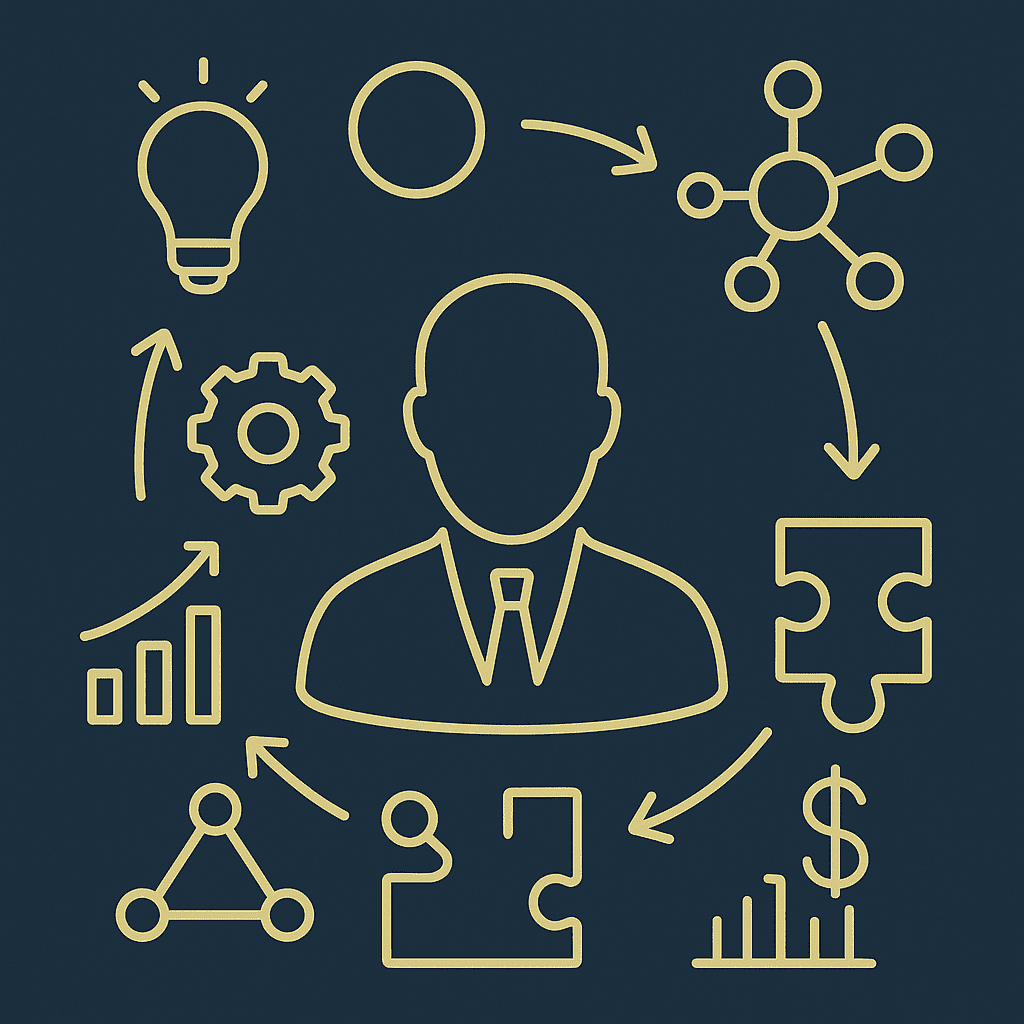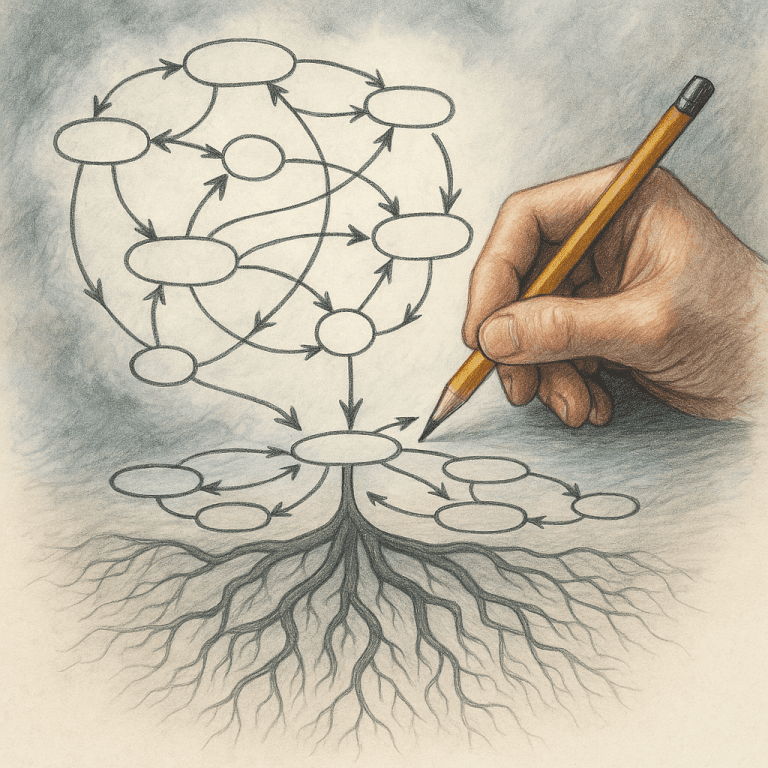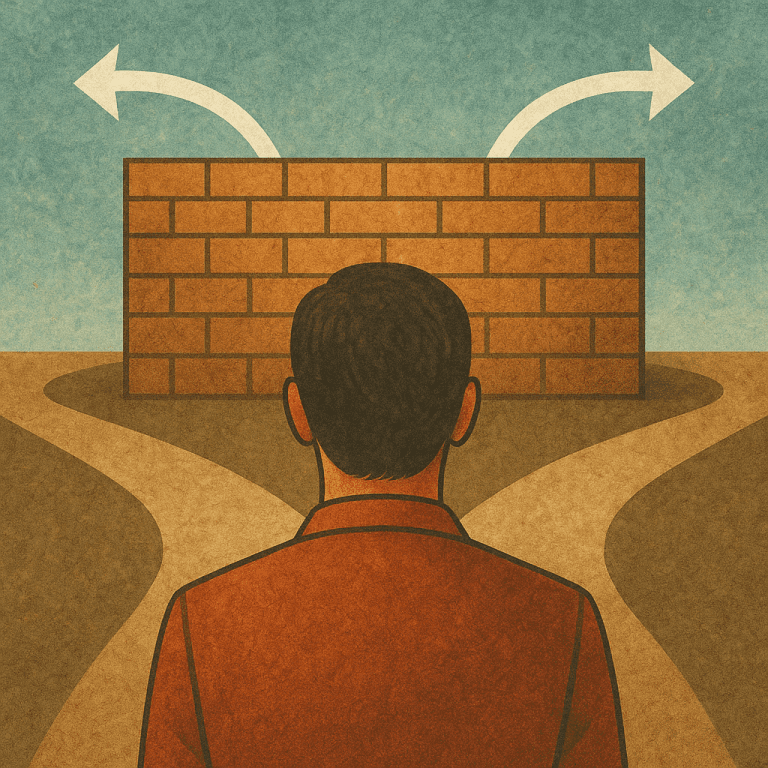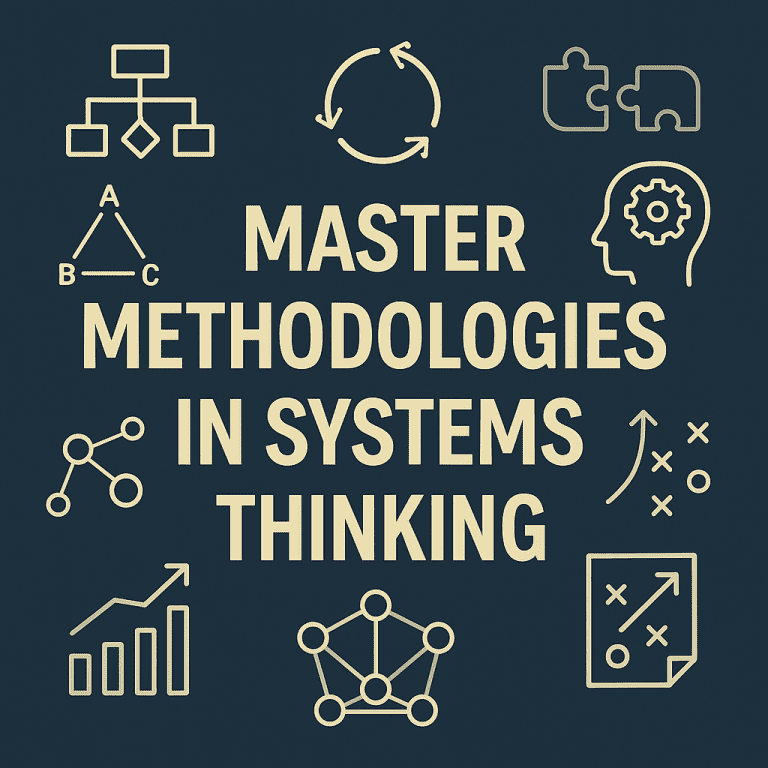Holistic Strategy, Innovation, and Resilience
Consultants and leaders today don’t lack tools.
They often lack coherence.
In a world overflowing with fragmented strategy decks, siloed process maps, agile rituals, and disconnected innovation sprints, real transformation often stalls. Initiatives flare up with initial excitement — only to fizzle out. Quiet resistance builds. Results plateau.
Why?
Because beneath all the activity, the underlying system remains unchanged.
Systems thinking isn’t just another analytical technique. It’s a profound way of seeing business as a dynamic, interconnected whole — not a collection of isolated parts to be optimized independently. It empowers us to cut through surface symptoms, align across functions, and unlock strategies and innovations that truly stick.
This post explores how systems thinking unlocks value across six core business domains — where systemic insight can deliver real, lasting impact.
🏛 Organizational Change
From “rolling out change” to transforming the system that resists it
Most change efforts treat resistance as something to overcome. But systems thinking reframes resistance as a feedback signal — a sign that the system is perfectly designed to produce what it currently does.
Systemic Insight:
- Surface reinforcing loops that maintain current behaviors (e.g., misaligned KPIs, cultural habits, siloed incentives).
- Identify balancing loops that unconsciously counteract new initiatives (e.g., fear, burnout, low trust).
- Redesign structures and challenge deep-seated mental models to support new behaviors.
Consultant Checklist:
☑ Map where resistance is showing up — and what feedback it offers.
☑ Diagnose self-reinforcing patterns that preserve the status quo.
☑ Co-create structural changes that align with the new direction.
📊 Strategic Planning
From fixed plans to living, adaptive strategy
Traditional strategic planning seeks precision and control. But in dynamic environments, prediction often fails. Systems thinking encourages us to plan with awareness of uncertainty and adaptability over rigidity.
Systemic Insight:
- Strategy becomes a continuous loop: sense → interpret → act → learn → adapt.
- Uncover mental models limiting leadership vision or perpetuating blind spots.
- Use causal loop diagrams to test for tipping points, delays, and unintended effects.
Consultant Checklist:
☑ Map feedback loops influencing strategic outcomes.
☑ Stress-test strategies against potential systemic disruptions.
☑ Build in mechanisms for double-loop learning and sensemaking.
🚚 Supply Chains
From linear logistics to resilient living networks
Supply chains are more than pipes. They are ecosystems, full of dependencies, delays, and amplifiers. Optimizing only for efficiency can create brittle systems.
Systemic Insight:
- Identify amplification patterns (e.g., the bullwhip effect).
- Surface delays and dependencies hidden across tiers.
- Reveal fragility caused by centralization or lack of redundancy.
Consultant Checklist:
☑ Map the full network — not just Tier 1.
☑ Identify time lags and feedback loops across nodes.
☑ Recommend resilience strategies: decentralization, buffer capacity, and diversity of sources.
📅 Complex Projects
From rigid plans to dynamic feedback architecture
Projects don’t fail because of bad intentions — they fail because invisible dynamics overwhelm good plans. Scope creep, delays, rework, and political friction are all systemic, not accidental.
Systemic Insight:
- Diagnose project archetypes like “Shifting the Burden” or “Fixes That Fail.”
- Visualize interdependencies across teams and time.
- Use systemic diagrams to align all stakeholders on dynamic complexity.
Consultant Checklist:
☑ Reflect on systemic causes behind past project failures.
☑ Build shared causal loops to reveal patterns and risks.
☑ Replace rigid milestones with adaptive checkpoints and learning loops.
👥 Leadership & Teams
From top-down directives to distributed sensemaking
Alignment doesn’t happen by decree. It emerges from shared understanding and psychological safety, which are both deeply influenced by system dynamics.
Systemic Insight:
- View teams as self-regulating systems of feedback, trust, and learning.
- Map informal influence networks and cultural patterns.
- Redefine leadership as context creation — not just control.
Consultant Checklist:
☑ Analyze team feedback loops and cultural signals.
☑ Identify where trust and safety are built — or eroded.
☑ Facilitate space for reflection, voice, and collective insight.
🕹 Innovation
From idea generation to system-enabled novelty
Innovation isn’t just a workshop or hackathon. It’s the output of a system that allows learning, risk-taking, and iteration to thrive.
Systemic Insight:
- Model how ideas emerge, are tested, and either adopted or discarded.
- Uncover cultural, structural, or incentive-based blocks to experimentation.
- Balance the tension between exploration and efficiency with care.
Consultant Checklist:
☑ Map the full idea-to-impact pipeline.
☑ Identify bottlenecks and gatekeepers stalling innovation.
☑ Recommend structural shifts that enable experimentation and fast feedback.
🔧 Mini-Practice: Strategic Systems Checklist
Choose a current client, team, or business you know well.
Now scan across the six domains:
✅ Where do surface-level issues hint at deeper structural patterns?
✅ Where is resistance not dysfunction — but feedback?
✅ Where are old incentives keeping outdated behaviors in place?
✅ Where is the system unconsciously protecting itself from change?
Circle 1–2 areas that feel most urgent.
Then apply the corresponding Consultant Checklist. Even one reframing can shift your next recommendation from helpful… to transformational.
🧠 Final Thought
Businesses aren’t just complicated machines.
They’re living systems — shaped by feedback, meaning, and deep interconnection.
Systems thinking doesn’t replace your expertise.
It deepens it. It adds coherence. It connects dots.
It helps you go beyond fixing symptoms — and start transforming root structures.
It turns scattered efforts into sustainable impact.
It turns smart advice into wise action.
When you adopt this lens, you stop chasing quick wins.
You start building organizations that endure, evolve, and thrive.
That’s not just better consulting.
That’s systems wisdom in action.
- The Whisper of the Whole: A Systems Thinking Guide for Consultants
- What is a System, Really?
- The Living Dance of Systems
- Resilience and the Wisdom of Adaptive Systems
- Roots of Insight
- The Systems Thinker’s Compass
- Drawing Complexity
- Peering Below the Surface
- Master Methodologies in Systems Thinking
- Enhancing Familiar Tools with Systems Thinking
- Transforming Business Through Systems Thinking
- Systems Thinking in Public Policy & Governance
- Sustainable Systems
- Systems Thinking for Engineering & Technology
- The Inner System: You
- The Roadblocks
- The Future of Systems Thinking
- Systems Thinking FAQ: Myths, Misunderstandings & Core Insights







